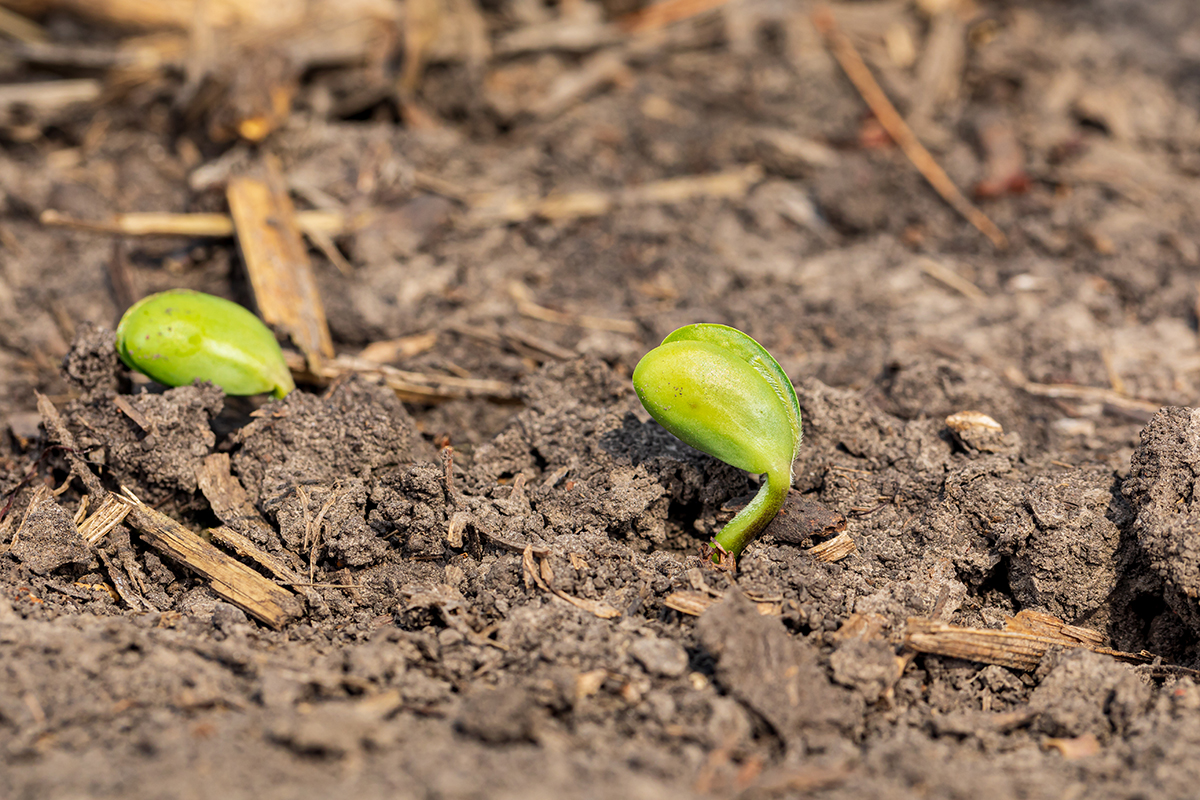By Margaret Smith, PhD
Albert Lea Seed Agronomist
“How deep can I plant my soybeans when conditions are dry?” This is a common question we’re receiving this spring because of the widespread dry surface soil conditions.
Recommended planting depth for soybeans ranges from 1.25” to 1.75”, with advice to go no deeper than 2”. This is slightly deeper than previously recommended. Seed that is placed deeper, into more consistent moisture and temperature conditions and further away from any residue, results in a better stand that emerges more evenly.
There are exceptions to the no deeper than 2” recommendation:
- Organic growers sometime plant as deep as 2.25” to allow time and clearance before soybeans reach the crook stage of development for early rotary hoeing weed control passes.
- On lighter, sandier soils, growers may go as deep as 2.25” to 2.75”
- Later plantings can be slightly deeper as soils are warmer
We’ve all heard stories of folks planting 3” deep with reported success, but research has demonstrated plant population reductions and decreased yields with depths of 3” or deeper. On an individual field with no other depth comparison, growers may have no idea if those deep planting depths reduce their yields.
Though you can plant seed into dry ground and wait for rain, most growers prefer to plant to moisture. Soybeans need to absorb half their weight in water before they begin to germinate. Planting into dry ground often leads to uneven emergence, because light precipitation may wet the ground unevenly, leaving some seeds in moisture and swelling while others remain in dry ground. For organic growers, this is worse than for conventional farmers. Even emergence is key to successful early rotary hoeing or tine weeding, and later timely row cultivations.
Seeding depth in dry soils
Are there other options in dry soils? Mark Hanna, former Ag. Engineer at Iowa State University, has this recommendation to get deeper in the soil profile to reach moisture (this method is also farmer-tested, with good success):
“[A method to] increase planting seed depth to a zone of adequate moisture is to create a furrow ahead of the planter by setting your row cleaner depth deeper than usual. This concept loosens soil for easier penetration of the seed opener. More aggressive or deeper depth settings may remove an inch or two of surface soil before insertion of the seed by the seed opener and depth-gauge wheels.
Creating a furrow with row cleaners may be the simplest method to insert seed deeper than ordinarily capable with the planter’s seed depth adjustment (typically 3 to 4 inches).
[However, take care:] this approach also carries potential risks if heavy rains occur during early germination and growth. Rainfall can puddle and seal tilled soils and/or wash some of the soil pushed aside by the row cleaners back into the furrow, affecting the ability of the crop to emerge. This practice is best used on flatter ground or when planting on the contour.”
This practice mimics the action of older, Lister planters used in the dry areas west of Minnesota and Iowa, which made a furrow to plant into in those drier climates.
If cleaning a couple of inches of soil from the row area and planting at 2” still doesn’t get you to moisture, it’s better to delay planting and wait for a rain.
___
Resources:
- Agronomy: Rethinking Planting Depth
- Planter Adjustments for Dry Soil
- Soil and Management Factors Influencing Seeding Depth
- Soybean Planting Depth Matters
- Soybean Planting Depth Considerations for Iowa
- Soybean Seed Depth in Dry Conditions
